New Brompton G Line Launched – Brompton welcomes a gravel bike to the fold
The iconic folding bike brand pedals a bicycle to customers who want to reach well beyond the city limits and deep into the countryside
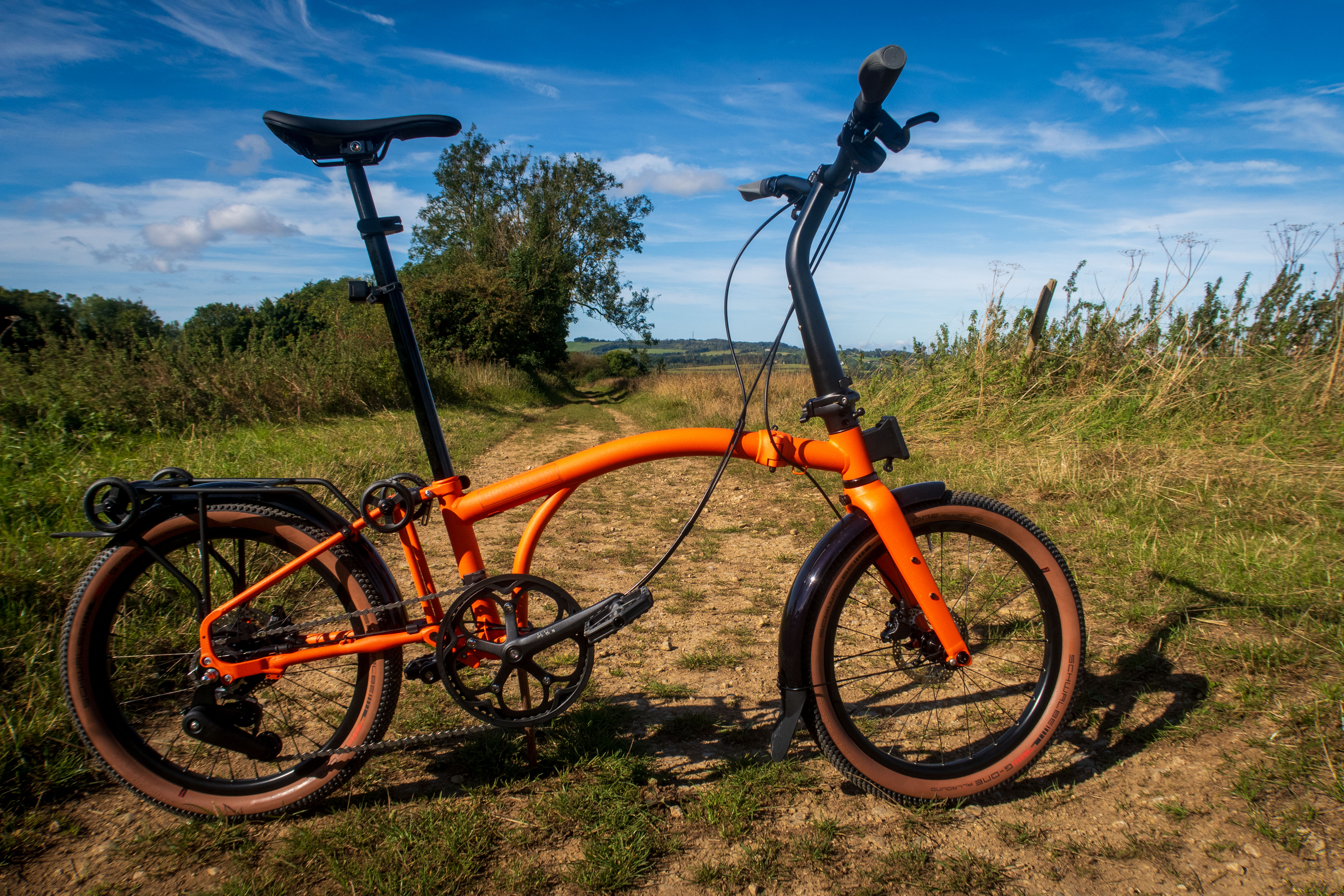
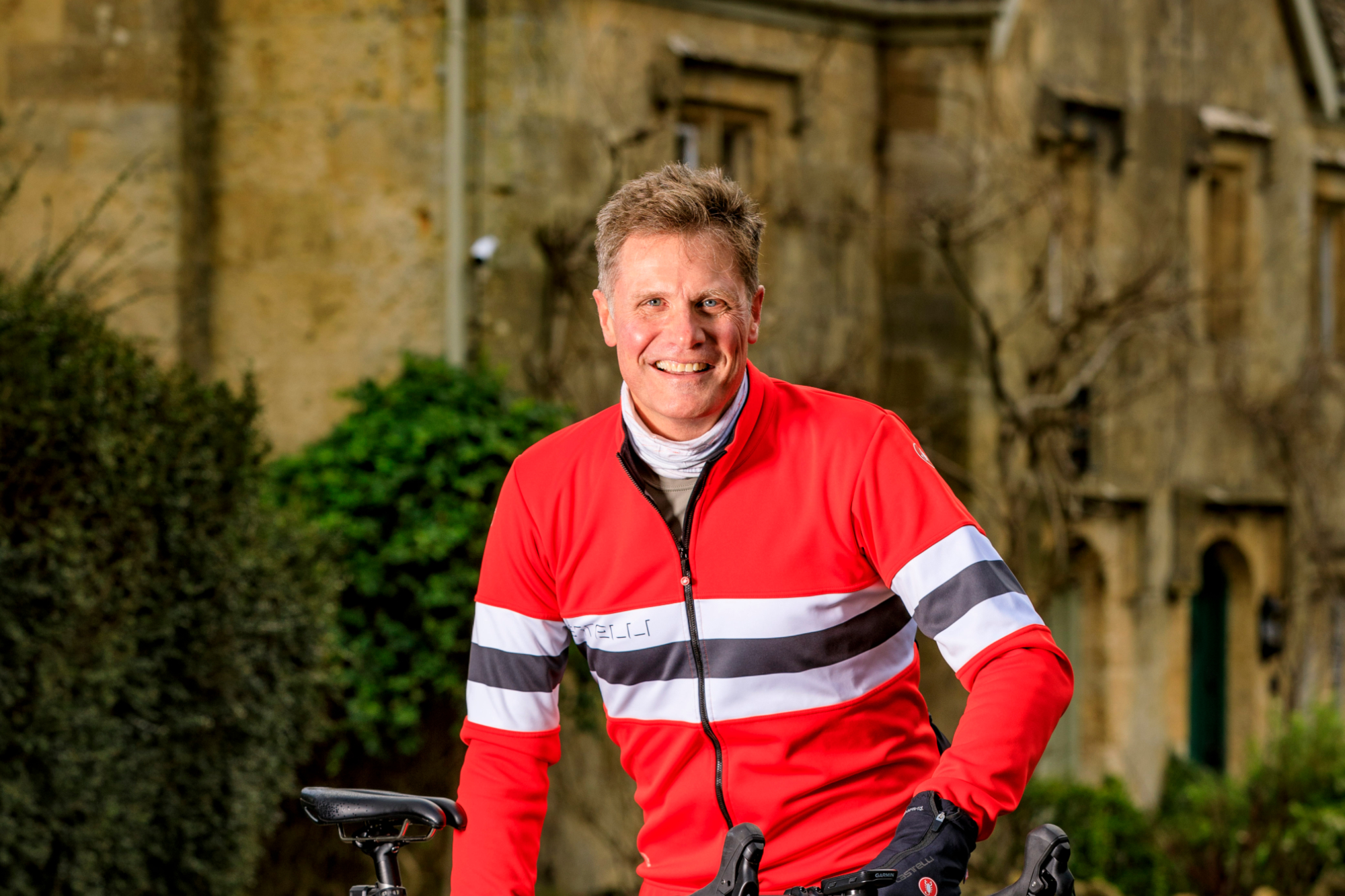
No, it’s not April 1st, Brompton, possibly the most urban of bike brands, really has launched a folding gravel bike. Two, actually - there’s an e-bike variant too – both under its new G Line banner.
I know what you’re thinking, those teeny, tiny wheels are going to get swallowed up by the shallowest of ruts, and it will be impossible to roll over anything larger than a pebble of pea shingle. Well, spoiler alert, it’s actually rather good – read on for my first ride impressions.
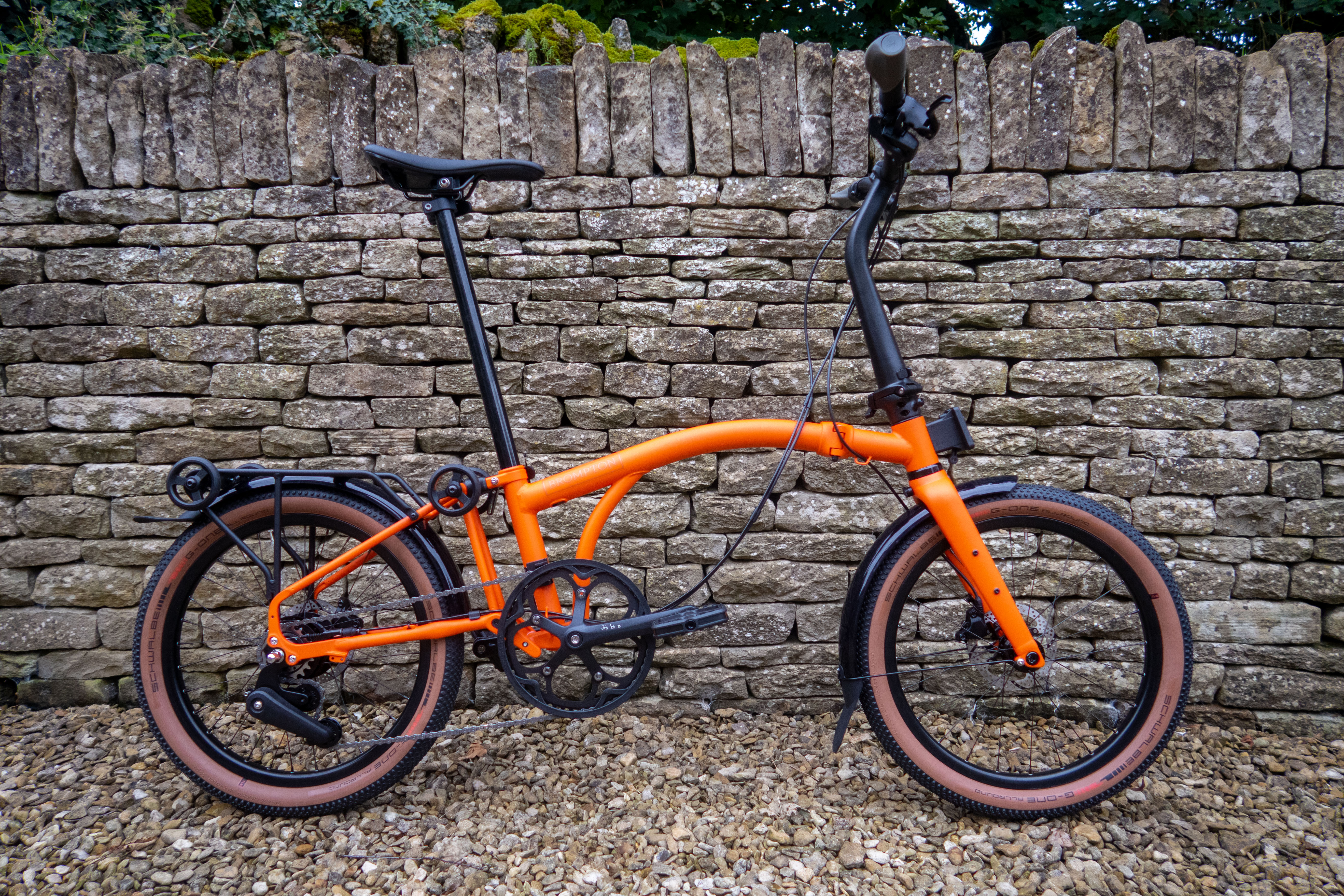
The G Line retains the trademark Brompton silhouette
Brompton says this is the first major new addition to its platform in 50 years, which is plausible. It’s not, however, Brompton’s first foray into gravel, an honour claimed by its Brompton x Bear Grylls Special Edition model, which turned out to be little more than its existing C Line, with the application of olive-green paint and hi-viz orange decals.
The new G Line is an entirely different proposition, built from the ground up for off-road duties, it shares little with the original Brompton other than the iconic silhouette, albeit super-sized, and its nifty folding mechanism. Wisely, these brand-defining traits have both been retained.
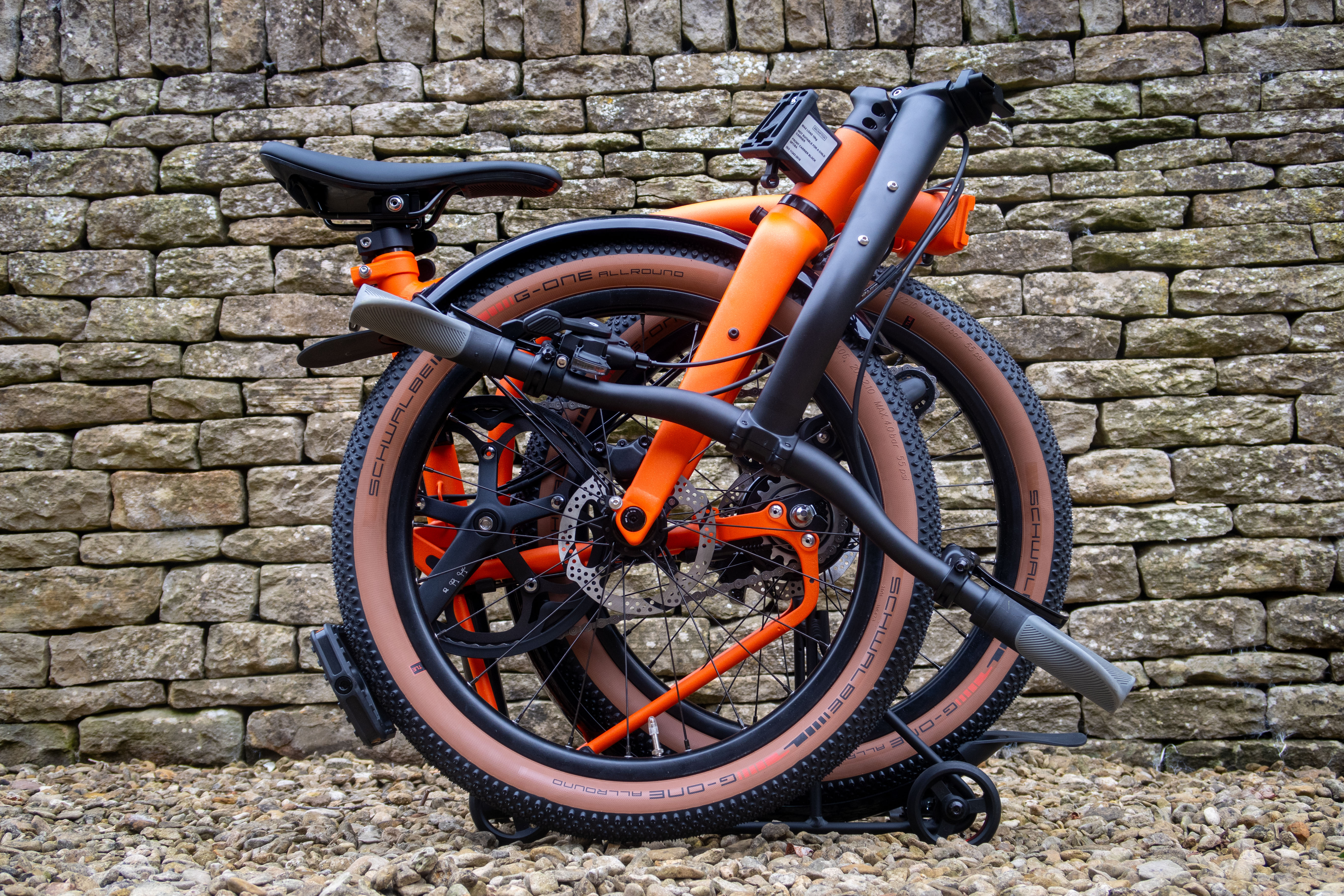
The G Line folds just like a regular Brompton, but the pack size is larger
One of the most obvious differences is the wheel size, which has grown from 16 inches to 20 inches. The pair is shod with fat Schwalbe G-One Allround rubber, in a custom tyre size – 20 x 2.1 (54-406) – developed especially for the G Line. As the name suggests, these puncture-resistant, tubeless-ready tyres have a fine, non-aggressive, studded tread pattern for good traction and acceptable rolling resistance on light gravel as well as tarmac. If one component encapsulates the direction in which Brompton is taking the G Line, this is it. However, if your focus is still more urban, Brompton also offers slick Continental Contact tyres as an alternative.
The inclusion of disc brakes is the next departure for Brompton, a brand that still uses rim brakes across the rest of its lineup. Impressively, for a folding bike, the TRP-made braking system is hydraulic. So, despite the petite 140mm rotors, stopping power should be potent enough for most riders in most conditions.
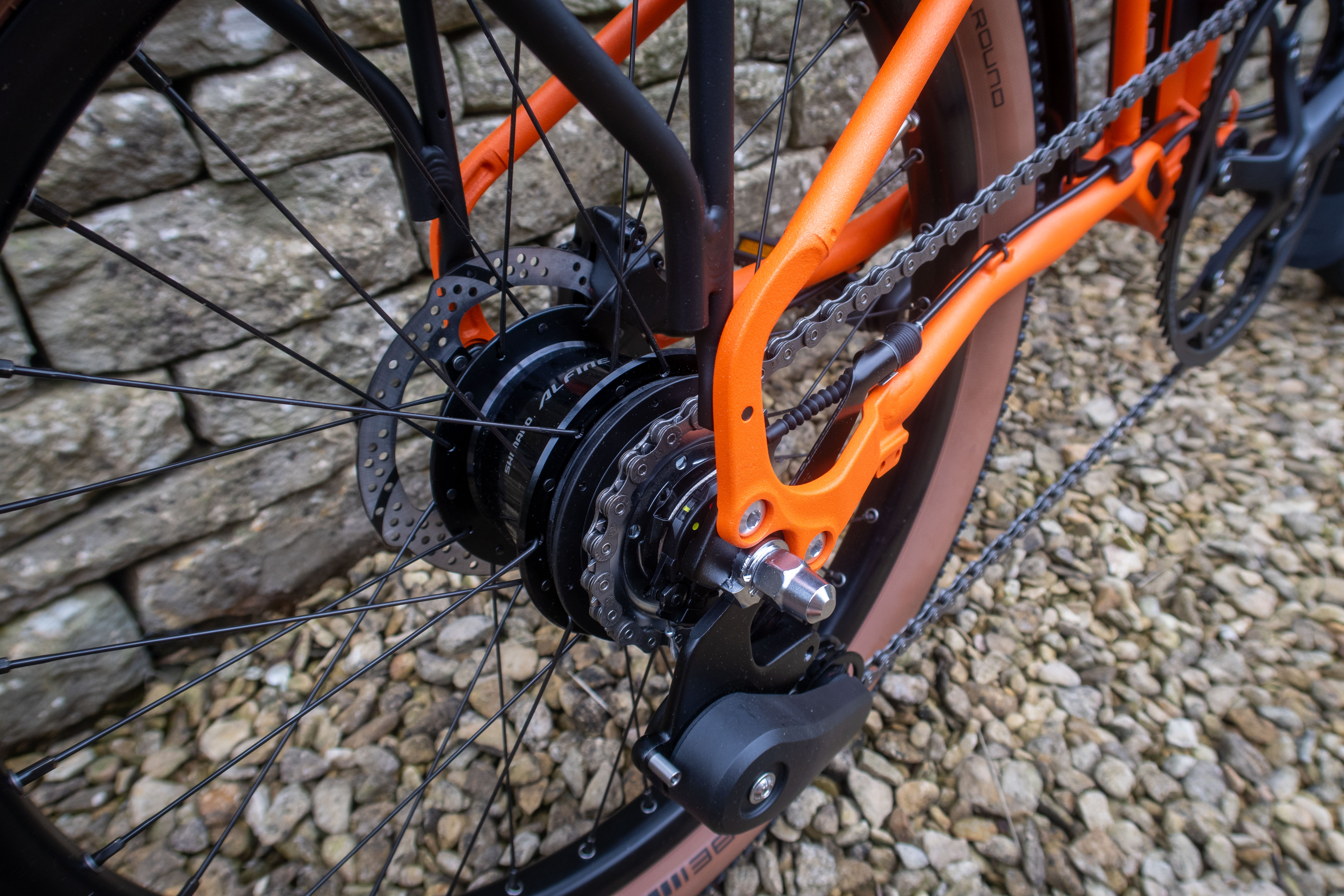
The Shimano Alfine 8-speed hub gearing tucks delicate components out of harm's way.
Very sensibly, Brompton has specified Shimano’s Alfine eight-speed internal gear rear hub, which offers a 307% gear range and keeps all the delicate drivetrain components tucked away out of harm’s way. Alfine is low maintenance too, requiring no more than the occasional oil change. Up front is a 54t chainring, which looks enormous, but is a consequence of the small wheels, which lower the gearing significantly. The handlebar shifter comes courtesy of Microshift.
Get The Leadout Newsletter
The latest race content, interviews, features, reviews and expert buying guides, direct to your inbox!
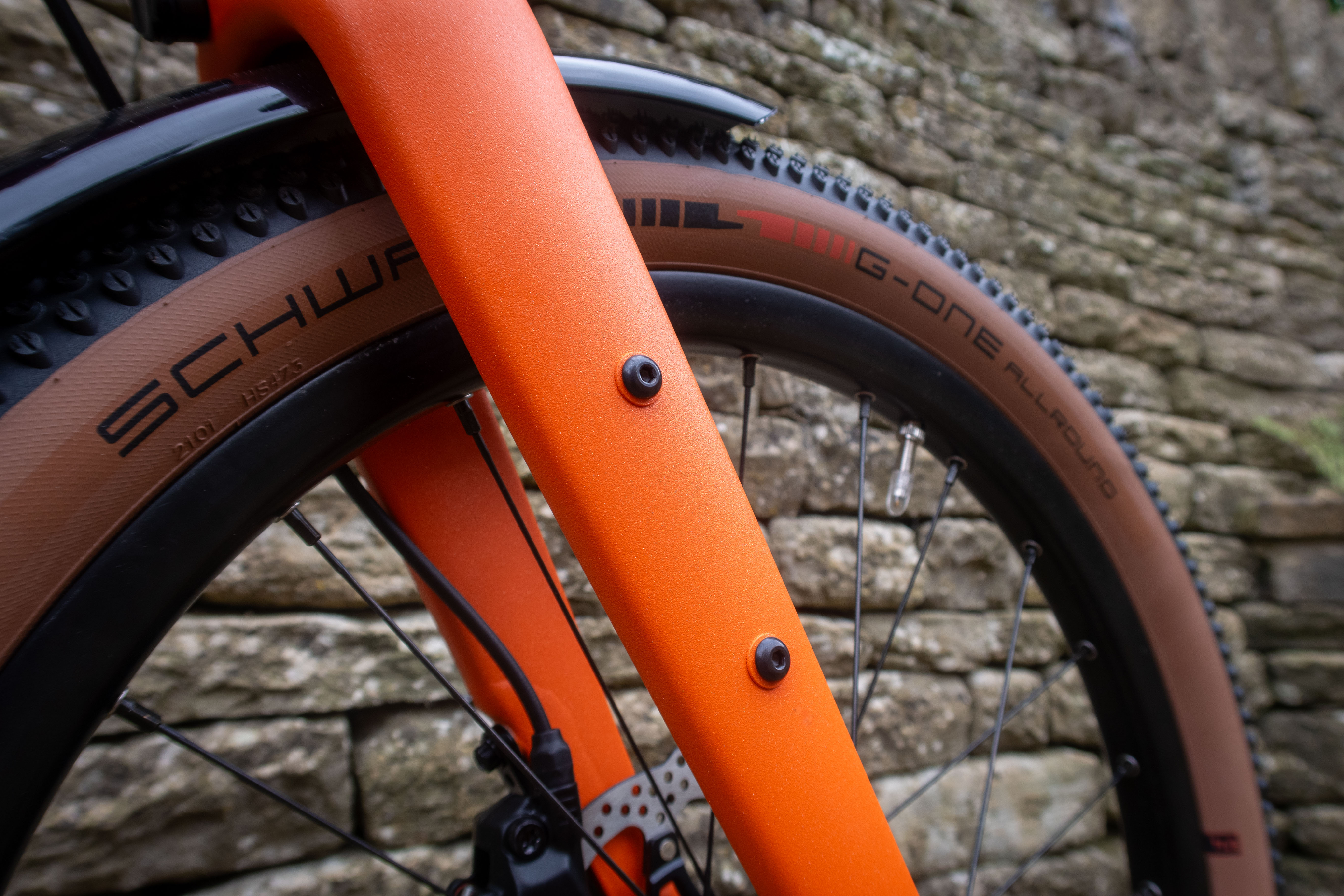
Cage bosses on the fork and stem are a practical touch.
In profile, the G Line’s steel frame looks very similar to a regular steel Brompton, even the main tubes share the same 44.45mm diameter. The rear triangle around the dropouts has been stretched into a D-shape though, to accommodate the disc brake calliper.
Like the titanium T Line, the fork blades are straight, rather than curved, and feature a couple of bottle cage bosses on the drive side.
Brompton hasn’t released the figures, but it says the G Line has a longer wheelbase and longer chainstays than its existing models, no doubt a result of the bigger wheels. These geo changes should make the G Line a more stable platform for off-roading, though curiously the headtube angle is now slightly steeper.
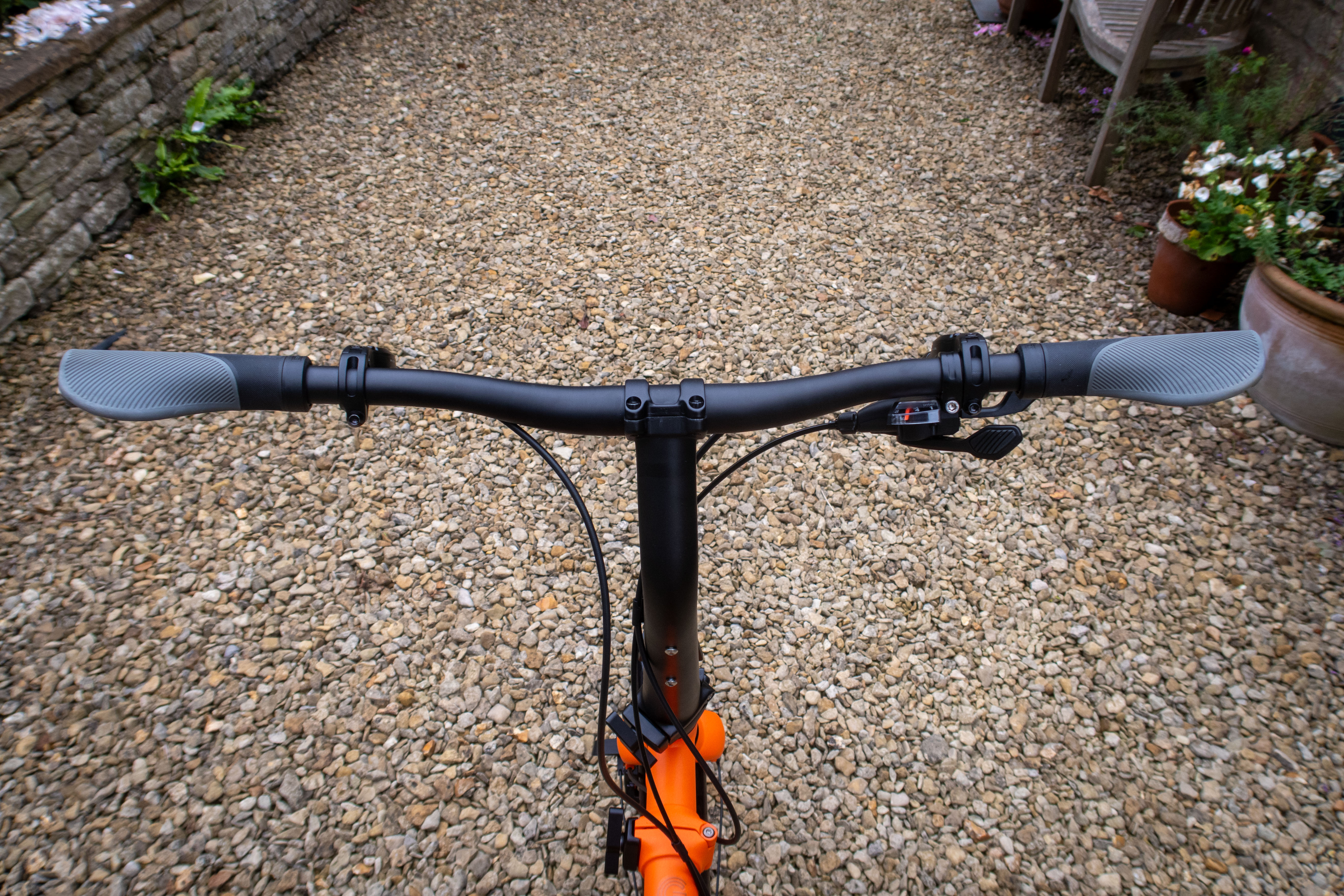
How wide? 65cm bars look epic and provide fantastic control.
Despite the G Line being available in three sizes – small, medium and large – they all share the same frame size, it’s the chunky, organically curved stem that dictates which one will fit you. It’s supplied in one of three lengths, to give sufficient stack height, curving progressively further away from taller riders to provide enough reach. The stem also boasts a couple of bosses for a ‘top tube’ bag or an additional bottle cage.
According to Brompton’s size guide, a size Small is recommended for riders 5’0” to 5’6”, Medium 5’6” to 6’0” and Large 6’0” to 6’6”.
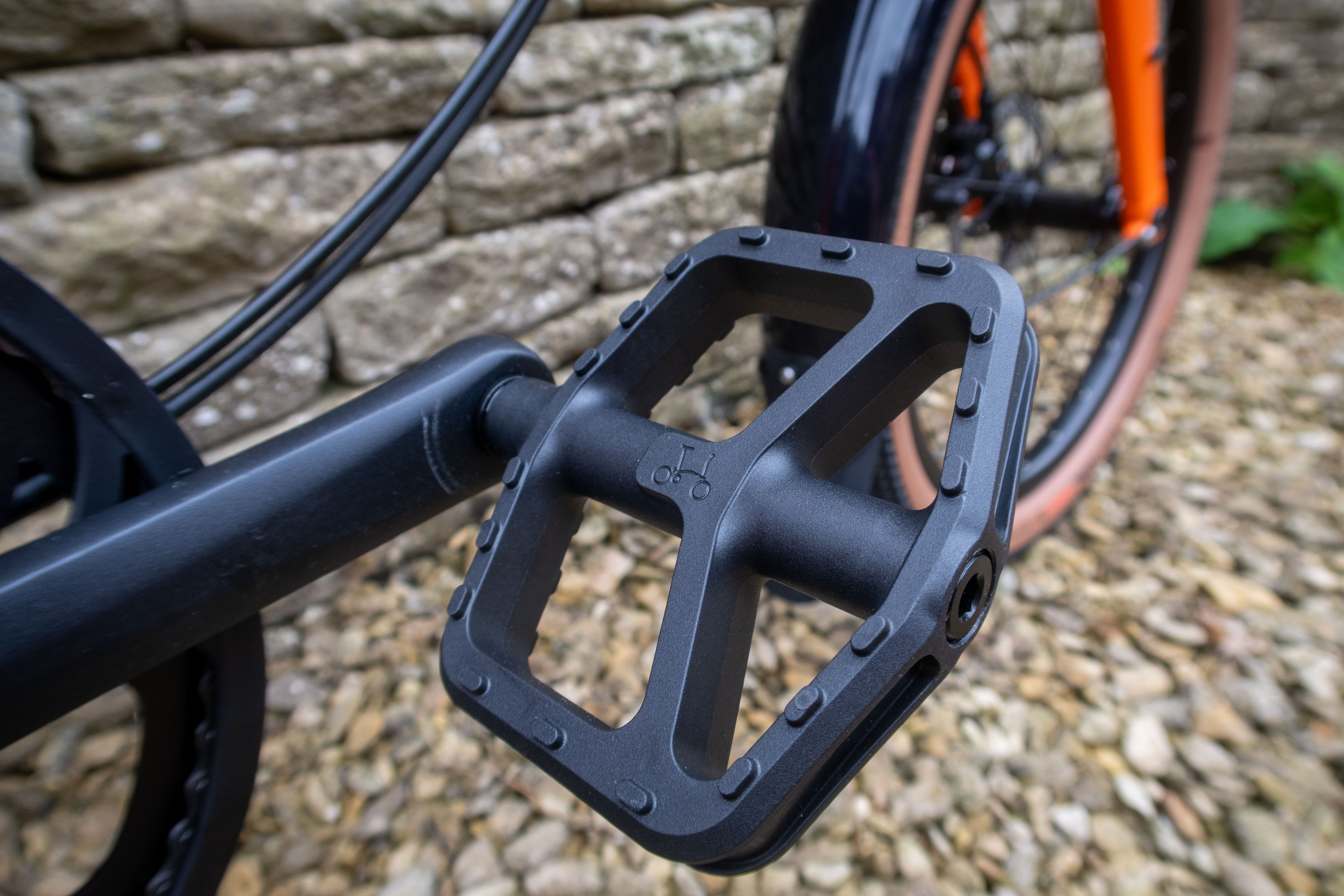
The iconic folding pedal is gone, replaced by wide platform models. The left pedal is quick release.
The bars are super wide by Brompton standards, and near straight like modern XC bars, for a good level of control over rough ground. On our loaner sample, size Large, they measure 65cm across. Ergonomic grips are fitted as standard, but we have no word on whether there will be mid or high riser bar options available in the future.
That famously recognisably Brompton characteristic, the folding left pedal, has gone, replaced by a wide platform, quick-release set with pronounced plastic studs for extra grip.
Electric G Line
Details are scant for the electric G Line, but we do know that the eight-speed Alfine hub is dropped in favour of a 250-watt rear hub motor that works in conjunction with Brompton’s Advance 4-speed system. The supplied battery delivers 345Wh, which Brompton reckons gives it a range of 20 to 40 miles.
There’s integrated lighting in the shape of a 9-watt beam on the front and a 1-watt light with built-in reflector at the back.
Size and Weight
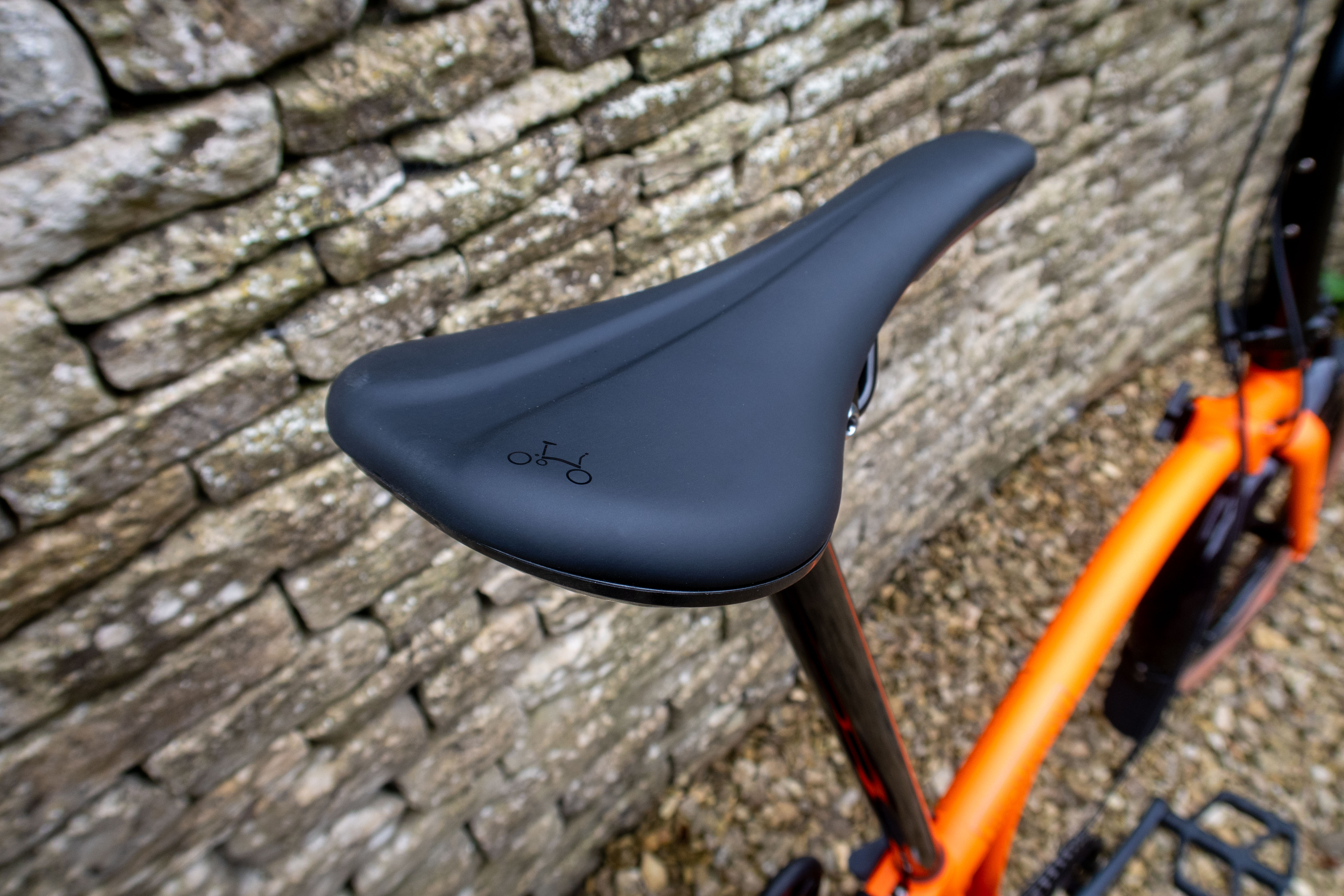
The long-nose saddle doubles as a carrying handle.
Fitting bigger wheels and more robust tubing makes the G Line far more versatile but there are size and weight penalties. Brompton says that the G Line 8-speed in size Small weighs 13.9kg, with a rack and mudguards/fenders adding another 900 grams. Our loaner bike in Large, with rack and mudguards/fenders tips the scales at 15.2kg. As a comparison, a mid-range, size Small C Line model weighs in at 11.35kg.
The electric G Line 4-Speed with rack and mudguards weighs 19.5 kg with battery in a size Small.
The G Line is considerably bigger than the C Line too, measuring 690mm (h) x 730mm (l) x 402mm (w) in a size Small, against 650mm (h) x 585mm (l) x 270mm (w).
The long saddle nose doubles as a carry handle, but trust me, you won’t want to lug a G Line very far using just one hand. The best technique is to roll it like a suitcase on its outsized roller wheels, guiding it using the raised saddle or extended handlebars.
Who is G Line for?
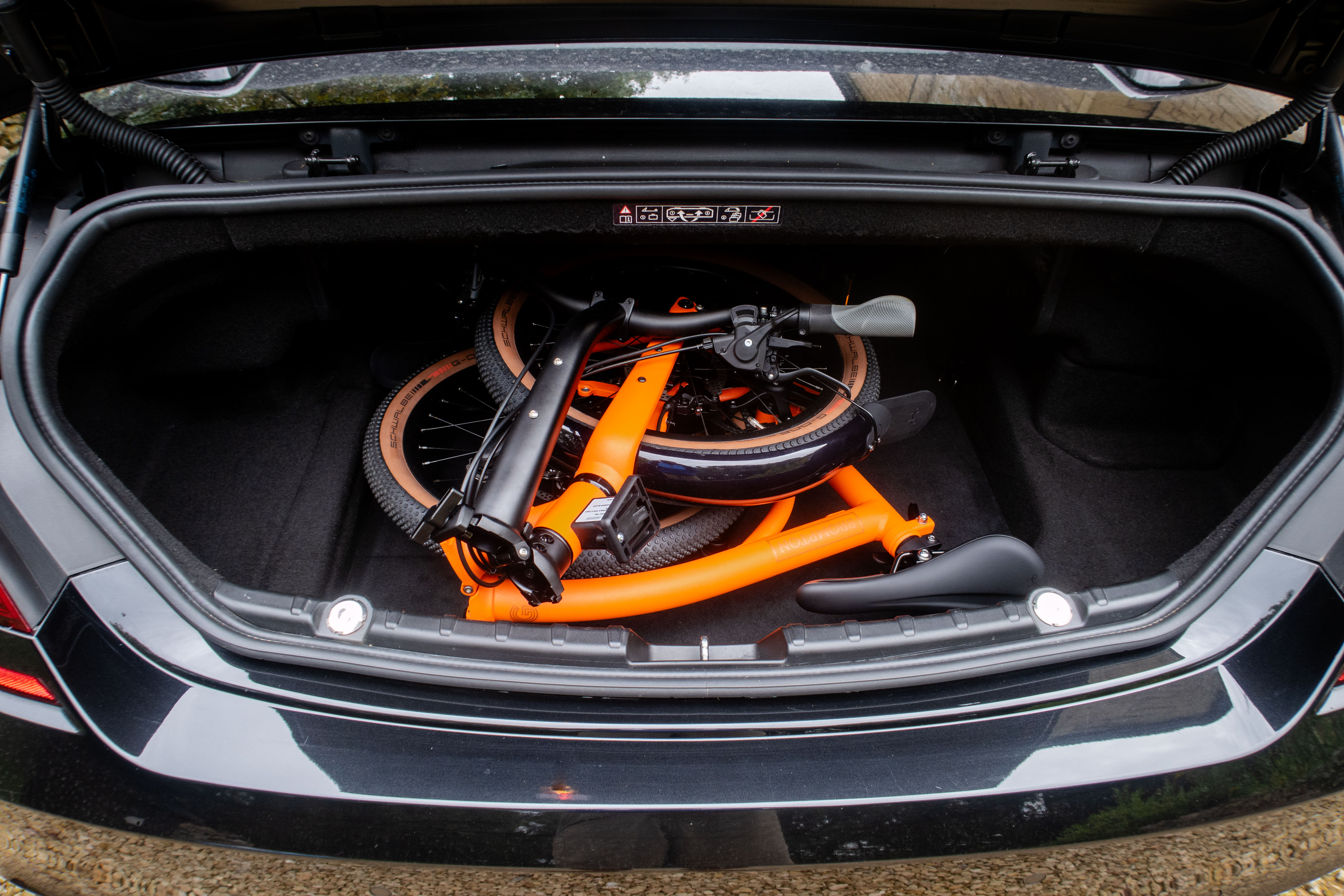
The G Line packed into the back of a BMW convertible. It's ideal for forays into the countryside.
The G Line opens up a whole new market of rural folk for Brompton, though I suspect the brand is really targeting urbanites who want to take a bike with them on forays into the countryside by car or public transport. It’s an urban commuter tool that’s suitable for holidays and weekends away too.
Of course, the reverse is also true, it will be highly attractive to multi-modal commuters - rural dwellers travelling into the city by train demanding a zippy way to ride the home to station and station to office legs.
Brompton has a loyal following of bike packers, some of whom travel immense distances across continents on their little fold-up bikes. They’ll be overjoyed at the versatility the G Line offers, in one fell swoop the Brompton is no longer solely the choice of eccentrics. The increased weight and packed size may deter some, but it should still be possible to fly with it as checked baggage on many airlines. The maximum system weight that Brompton recommends is 130kg, including luggage.
Finally, some people will just buy it because they adore its chunky good looks, stable ride quality and cushty tyres.
Pricing
Three colours are available: Forest Green, Adventure Orange and Traildust White.
- G Line 8-Speed: £2,395
- G Line 8-Speed with Rack and Mudguards: £2,495
- G Line 8-Speed with Lights: £2,480
- G Line 8-Speed with Lights and Rack: £2,580
- Electric G Line 4 speed: £3,495
First rides
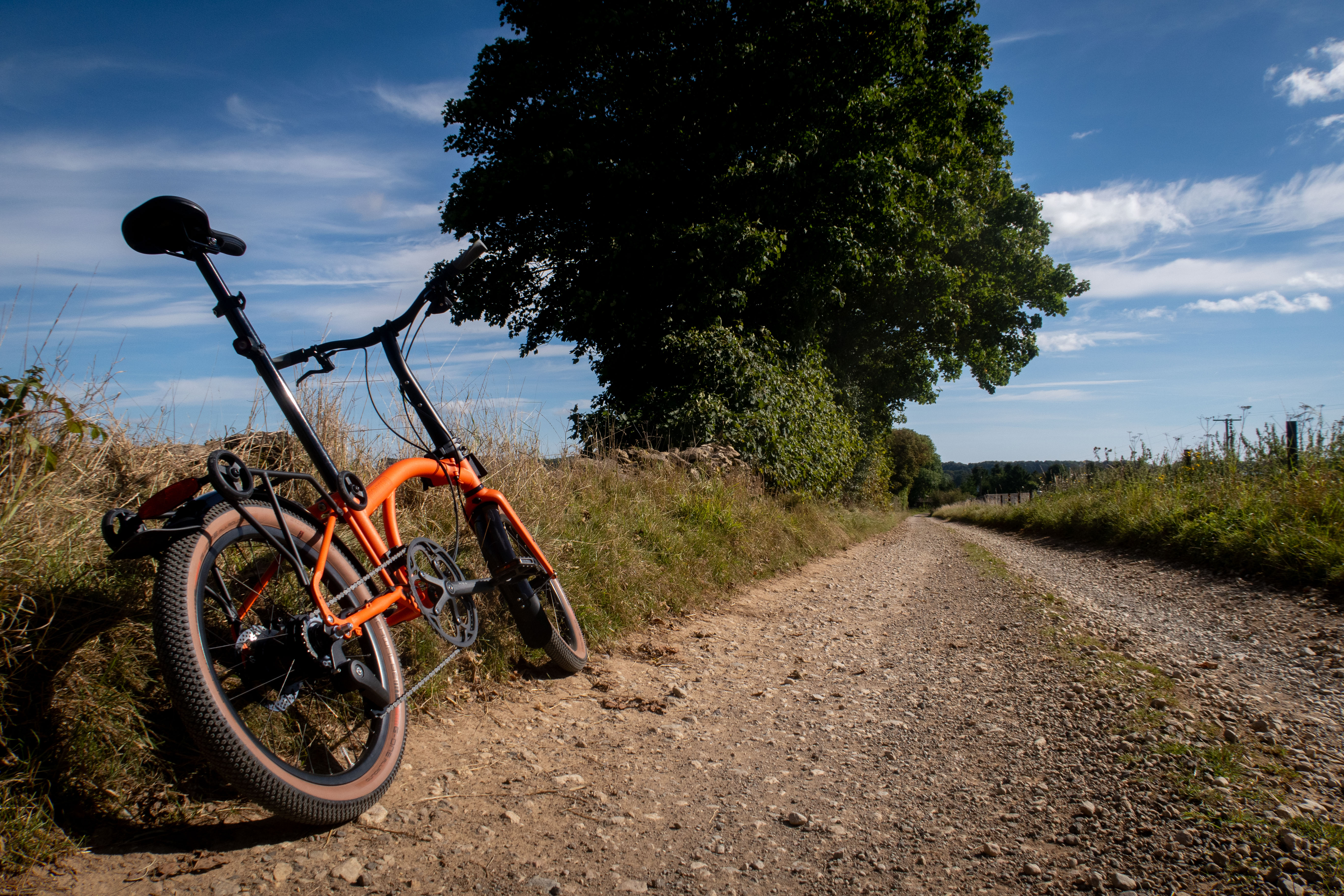
The G Line laps up fast gravel tracks
My friends, colleagues and family chuckled uncontrollably when I said I was going to get a Brompton gravel bike. “The tiny front wheel will bog down in the first rut it finds, throwing you over the bars,” they laughed. “Good luck with the rim brakes when the wheels get wet and muddy,” they chortled. “The narrow bars, no stem and tiny wheels make it the twitchiest bike on the road, let alone off,” they tittered. “Good luck trying to steer that down a gnarly descent.”
Well, they were wrong. While I wouldn’t wish the task of piloting a regular Brompton down a ‘gnarly descent’ on my worst enemies, the G Line isn’t a regular Brompton. It’s an entirely different beast when it comes to ride feel and off-road capability.
However, in almost every other respect it does behave just like any other Brompton. Unfolding my size Large loaner, in Adventure Orange, took me about five minutes the first time I tried it, but I’m down to about 20 seconds now I’ve gained the knack of guiding the front end into place with a smooth, stirring action. Folding it back up again takes about the same. There’s really not much to it, just two latches to secure and the seat tube quick release to fumble with.
It looks unmistakably like a Brompton too, just a little chunkier, more muscular, more capable.
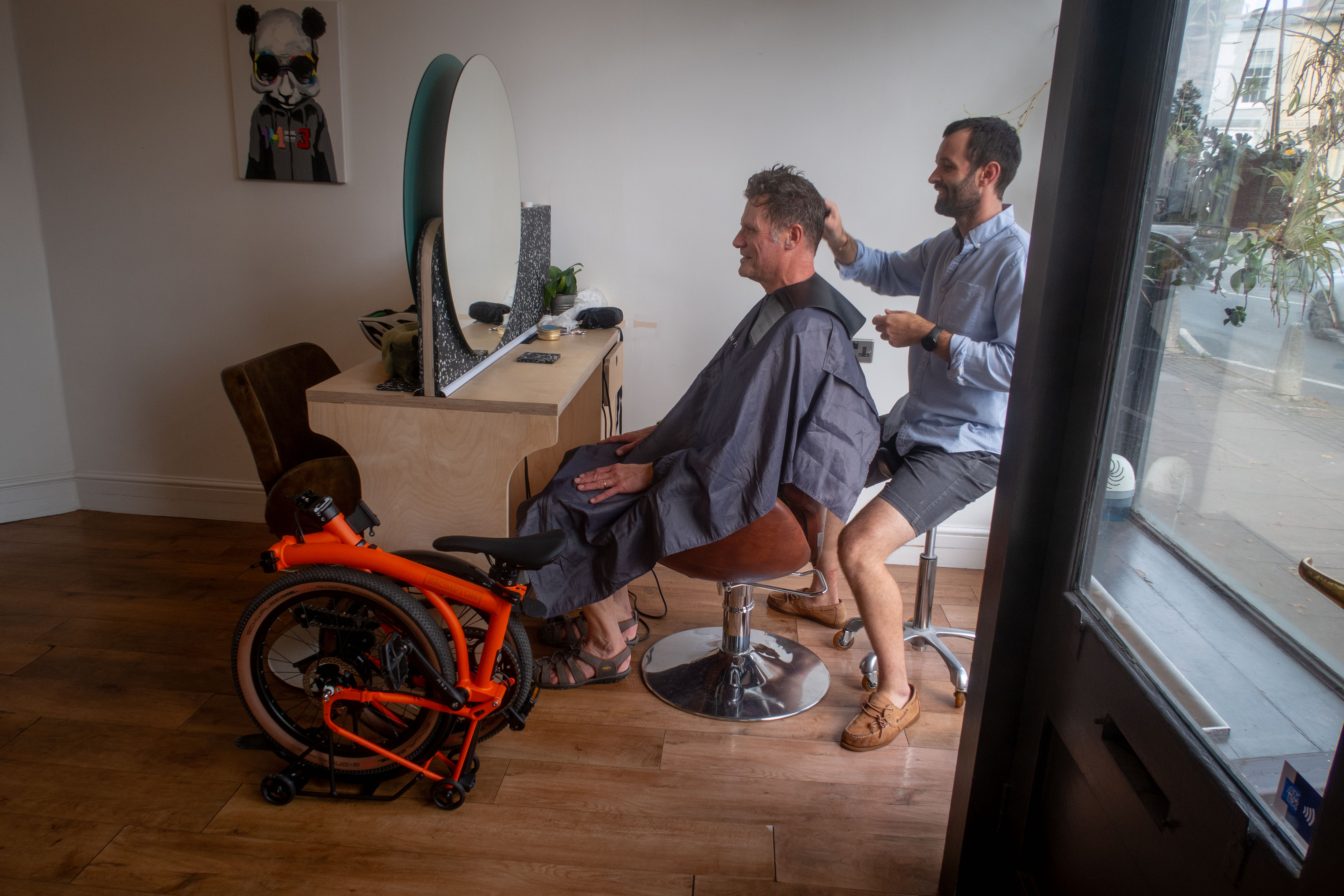
It works as an urban tool too, though it is significantly larger than a regular Brompton when folded.
As I already live in the Cotswold countryside, I thought I’d throw it a curved ball for my first ride by testing its urban credentials. So, off I set down a very busy A40 for an 11-mile round-trip to Cheltenham to get my hair cut. First, I had to negotiate Dowdeswell Hill, a long steepish descent with a mini switchback at the bottom, just before it joins the A40. It’s a popular Strava segment for locals.
Unsurprisingly, my position on the G Line is very upright, a consequence of the longer stem on the size Large, so initially, bowling down that hill, the bike felt very alien. Brompton says it ‘has the ride feel of a full-size bike for multi terrain’ but it really doesn’t. Every second, of every ride, it has been blindingly obvious that I’m perched high up on a little bike with tiny wheels.
Once I was dialled in though, it felt a remarkably stable place to be. The wheels may be tiny but they’re four inches larger in diameter than those on a regular Brompton, and they’re shod with deeper, wider tyres. This, in combination with the longer wheelbase, wider handlebars and decent brakes, makes the G Line feel reassuringly balanced and secure to ride. Sure, it’s lost some of that Brompton agility and directness, but that shopping trolley-like twitchiness is gone too. Which is a good thing.
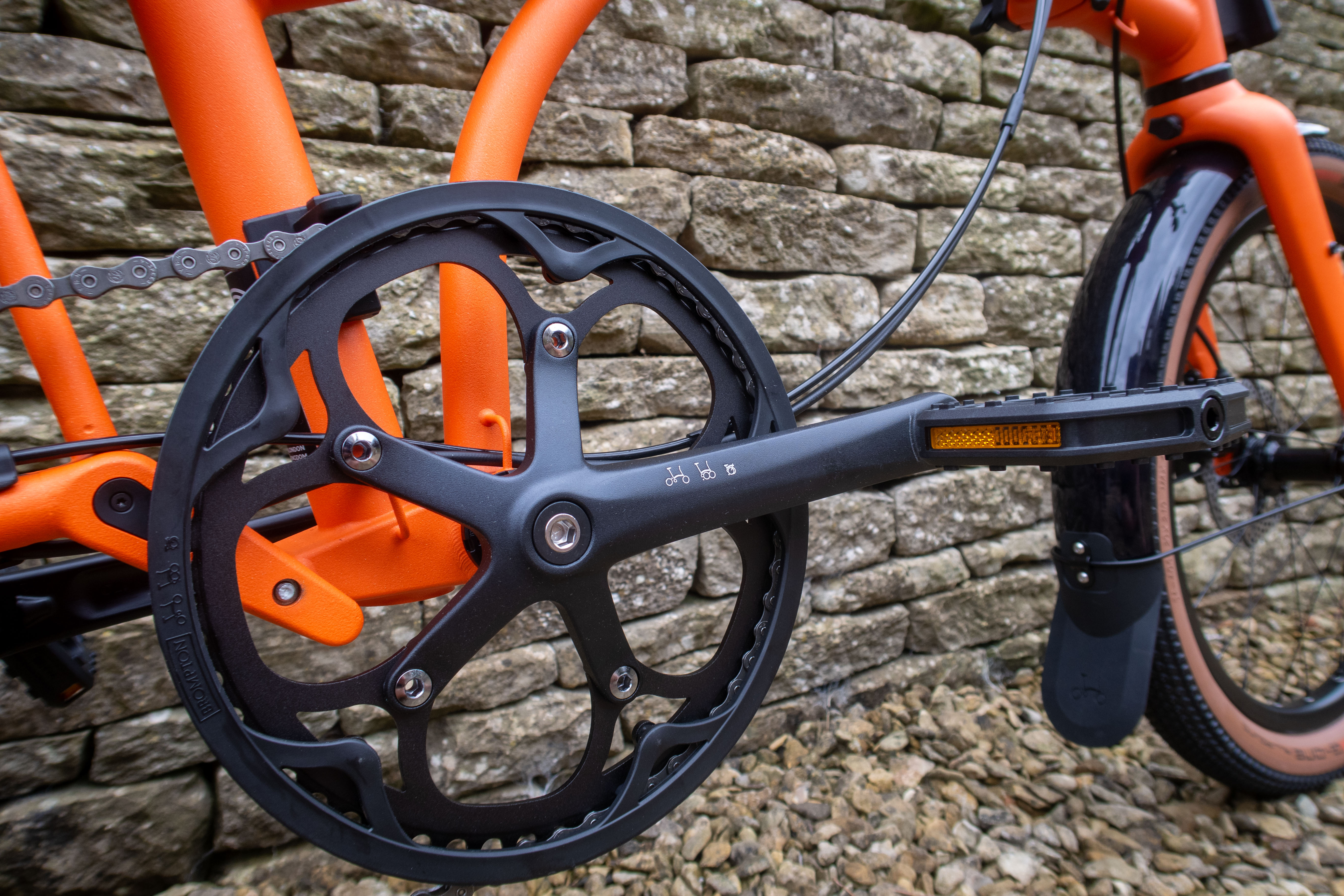
The massive 54t chainring still doesn't stop it spinning out on the flat.
Out on the A40, I wasn’t getting side-swiped by the buffeting from fast-moving cars and trucks, which was my biggest fear. I quickly realised too that this is a slow bike to pedal along a main road, it’s just a case of accepting it and plodding along. This is partially due to the gearing, which is plenty low enough for ascents but soon has you spinning out on the flats, despite the 54t chainring.
Once in Cheltenham, I was weaving through the backroads at a better pace than the traffic, and made it to my destination in the centre of town quicker than the journey usually takes me by car. With no parking to worry about, I was soon seated in the salon, my tangerine-coloured accomplice safely tucked up beside me.

The bridlepath that dissects this field is easily accessible for the G Line
Urban testing over, I’ve spent the rest of my time with the Brompton exploring the lanes, gravel tracks and farmland of the north Cotswold hills. Its eight gears are more than sufficient for the ascents here, but the weight of the bike and the wide tyres makes progress slow. It’s more like an MTB than a gravel bike in this respect.
On the plus side, it laps up fast gravel tracks with aplomb. Despite my concerns and the convictions of my friends, the wheels roll superbly over fine to chunky gravel surfaces and they’re just big enough to shrug off encounters with ruts and potholes. It’s been quite wet here over recent weeks, so the trails are just starting to get muddy. In these mildly slippy conditions, the Schwalbe Allround tyres have rarely broken traction, which is to be applauded.
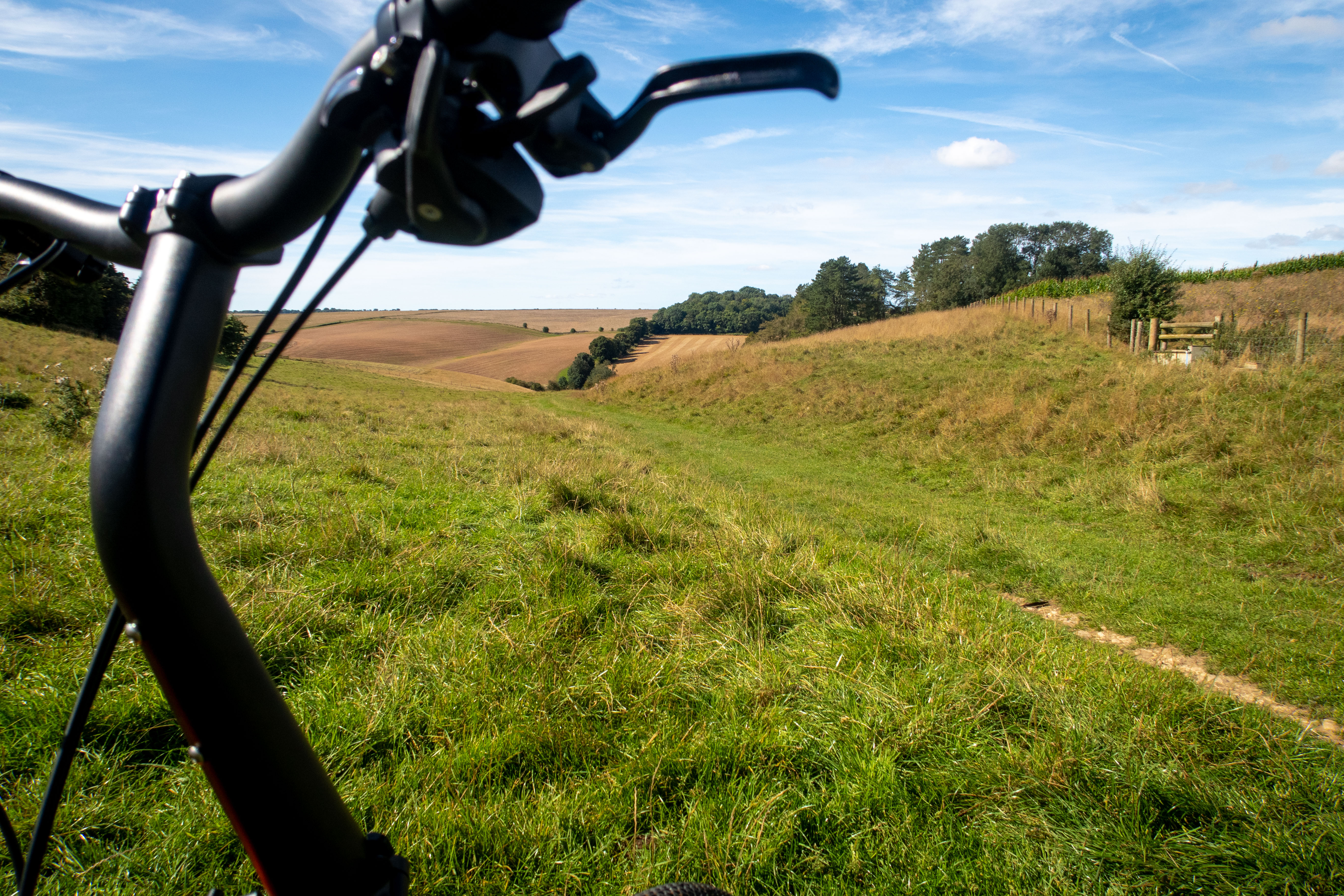
The G Line opens up whole new routes for the Brompton rider
Pointing the Brompton down slightly trickier, looser descents with the odd stretch of embedded rock – I hesitate to use the word gnarly – is a little unnerving at first but the little bike finds its way. More attention must be paid to line choice to keep the wheels rolling, but I found this under-biking experience fun and rewarding. The wide bars really help here, and, if you know a long ascent is approaching, it’s easy to drop the saddle out the way so you can shift your weight over the back wheel.
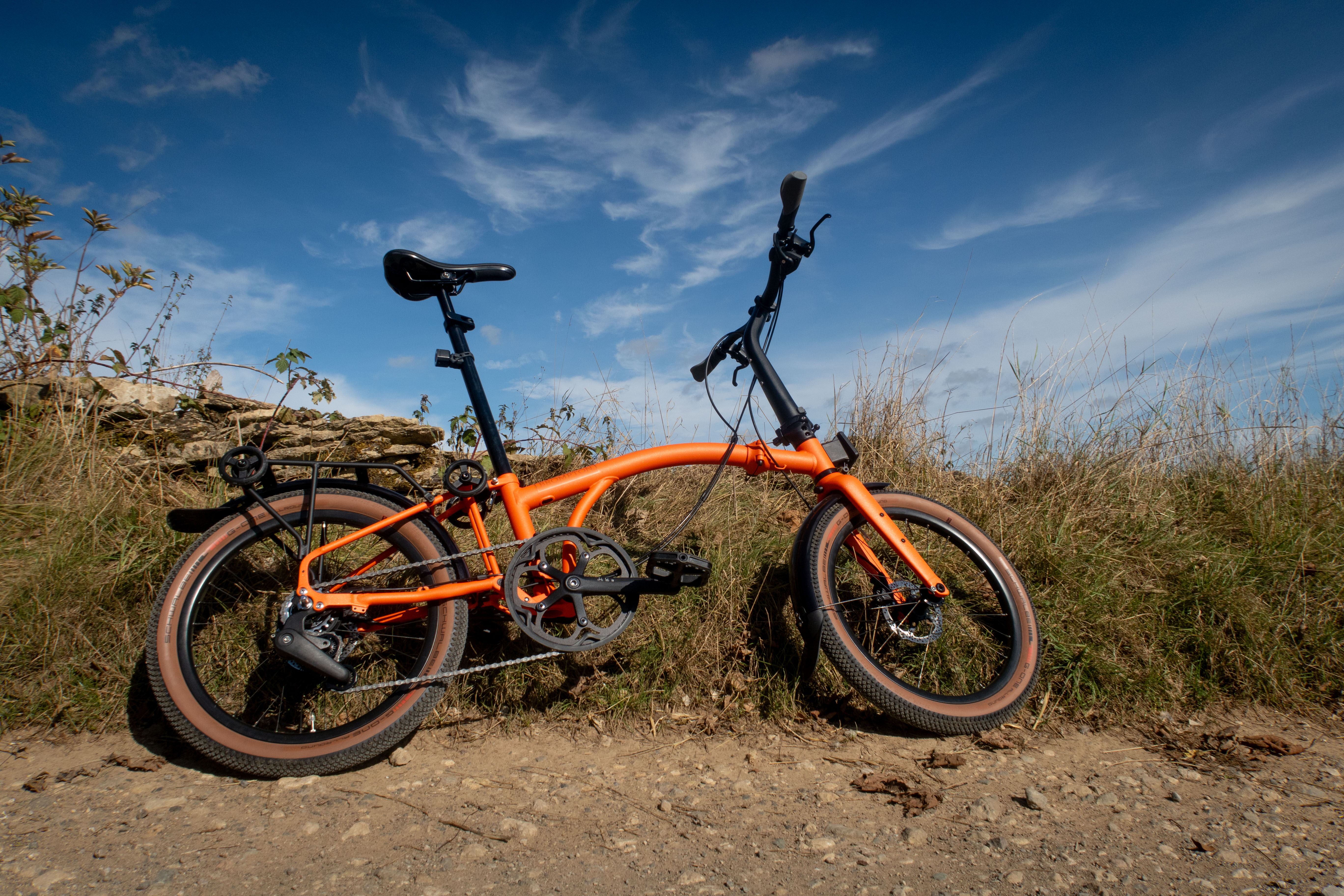
New adventures await. This is a very capable little bike.
I did find three areas problematic. Climbing a steep grassy bank full of hoof-sized indentations left by cattle is a challenge for any bike but it proved impossible for the Brompton, which came to an abrupt stop, just like a horse refusing a jump in the show ring. Again, you’ve got to keep the wheels rolling at all times.
Secondly, the pedals aren’t up to the job. The plastic studs are fine in the dry, but as soon as my soles got wet, I’d be slipping off the pedals left, right and centre. If it were my bike, they’d be the first thing I’d upgrade.
Lastly, at 15.2kg my size Large loaner is too heavy to carry in one hand over any distance. On smooth urban surfaces, such as tarmac and concrete, it rolls well but we don’t have much pavement in the countryside. Be warned, carrying it on and off trains, planes and automobiles will require strength.
Minor complaints aside, Brompton should be congratulated for building a little bike that really does bridge the urban-rural divide. It’s the only bike I know that performs equally well in both realms - let your outdoor adventures unfold.

Thank you for reading 20 articles this month* Join now for unlimited access
Enjoy your first month for just £1 / $1 / €1
*Read 5 free articles per month without a subscription

Join now for unlimited access
Try first month for just £1 / $1 / €1
Cycling Weekly's Tech Editor Simon spent his childhood living just a stone’s throw from the foot of Box Hill, so it’s no surprise he acquired a passion for cycling from an early age. He’s still drawn to hilly places, having cycled, climbed or skied his way across the Alps, Pyrenees, Andes, Atlas Mountains and the Watkins range in the Arctic.
Simon has 35 years of experience within the journalism and publishing industries, during which time he’s written on topics ranging from fashion to music and of course, cycling.
Based in the Cotswold hills, Simon is regularly out cycling the local roads and trails, riding a range of bikes from his home-built De Rosa SK Pininfarina to a Specialized Turbo Creo SL EVO. He’s also an advanced (RYT 500) yoga teacher, which further fuels his fascination for the relationship between performance and recovery. He still believes he could have been a contender if only chocolate wasn’t so moreish.
-
 Trek, State and Specialized raise bike prices while other brands limit US releases — Is this just the beginning?
Trek, State and Specialized raise bike prices while other brands limit US releases — Is this just the beginning?As tariffs hit, the bike industry is forced to adapt, whether through price increases, limited releases, or a restructuring of supply chains
By Anne-Marije Rook
-
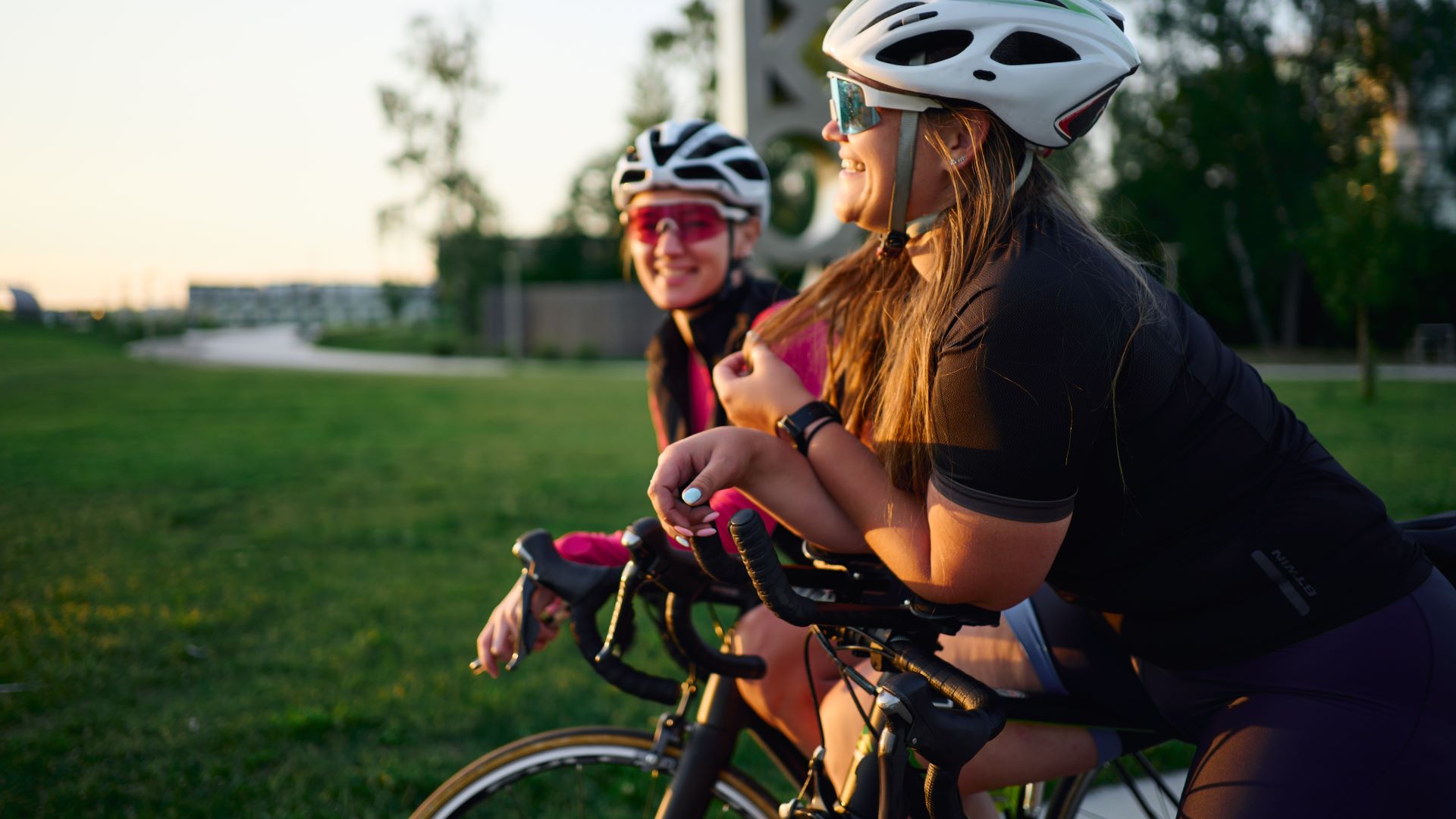 How I got my non-cyclist friend hooked on riding bikes — and how you can, too
How I got my non-cyclist friend hooked on riding bikes — and how you can, tooWith a little bit of gentle guidance, “bikes aren’t my thing” can turn into “when’s our next ride?”
By Marley Blonsky